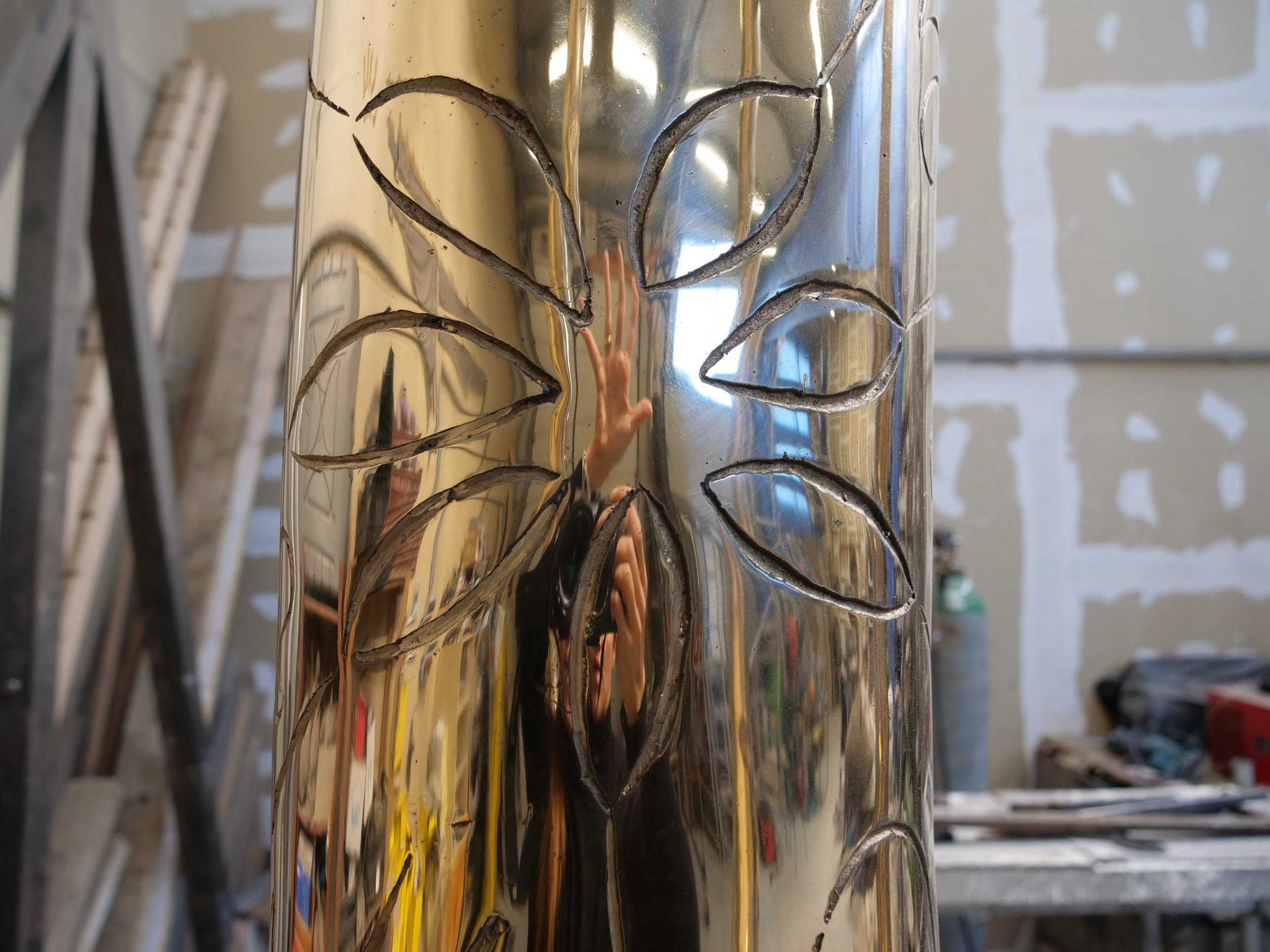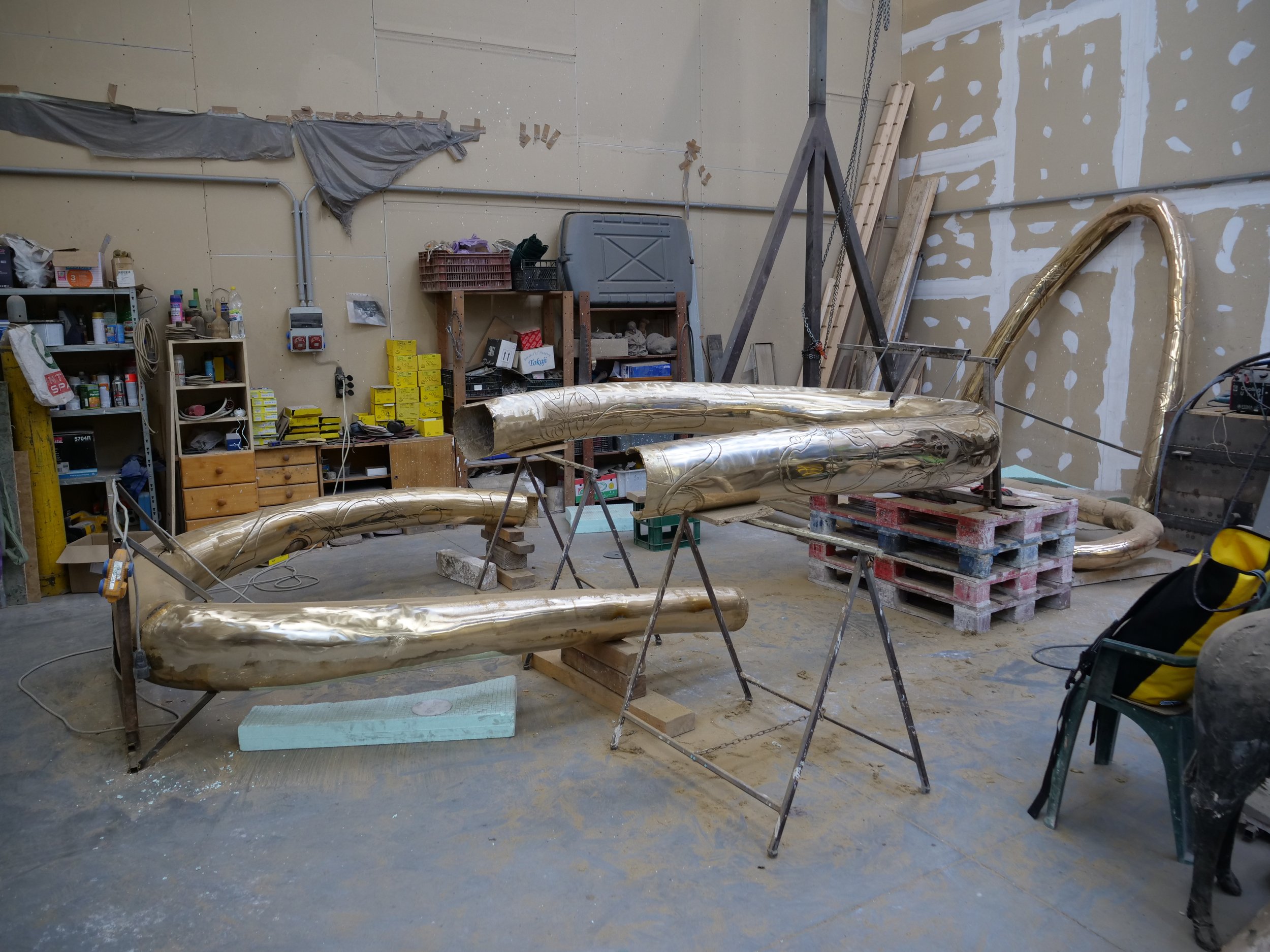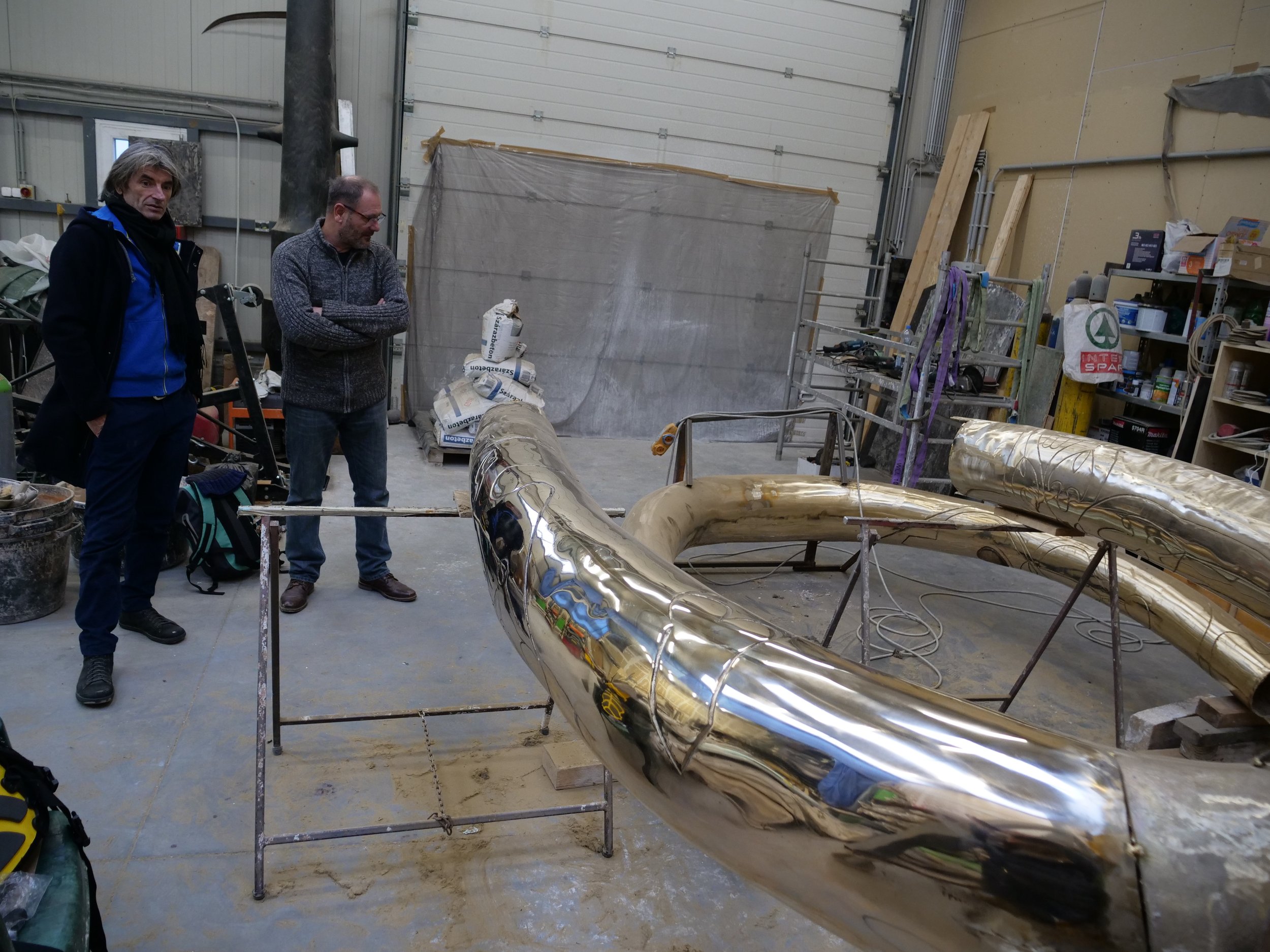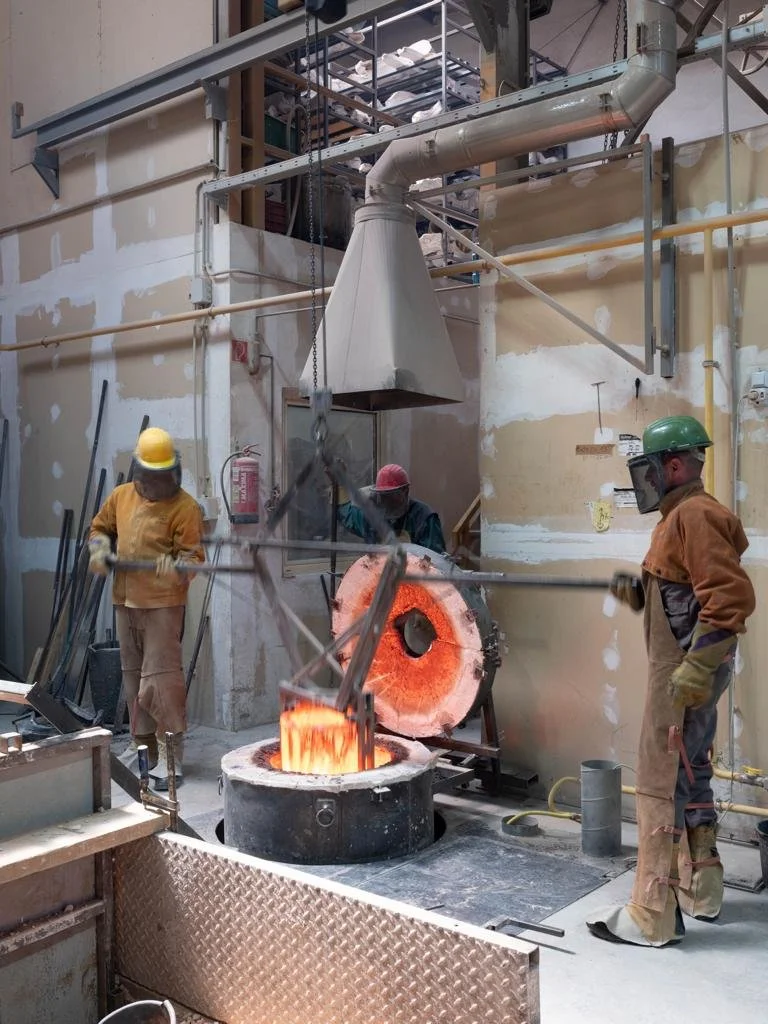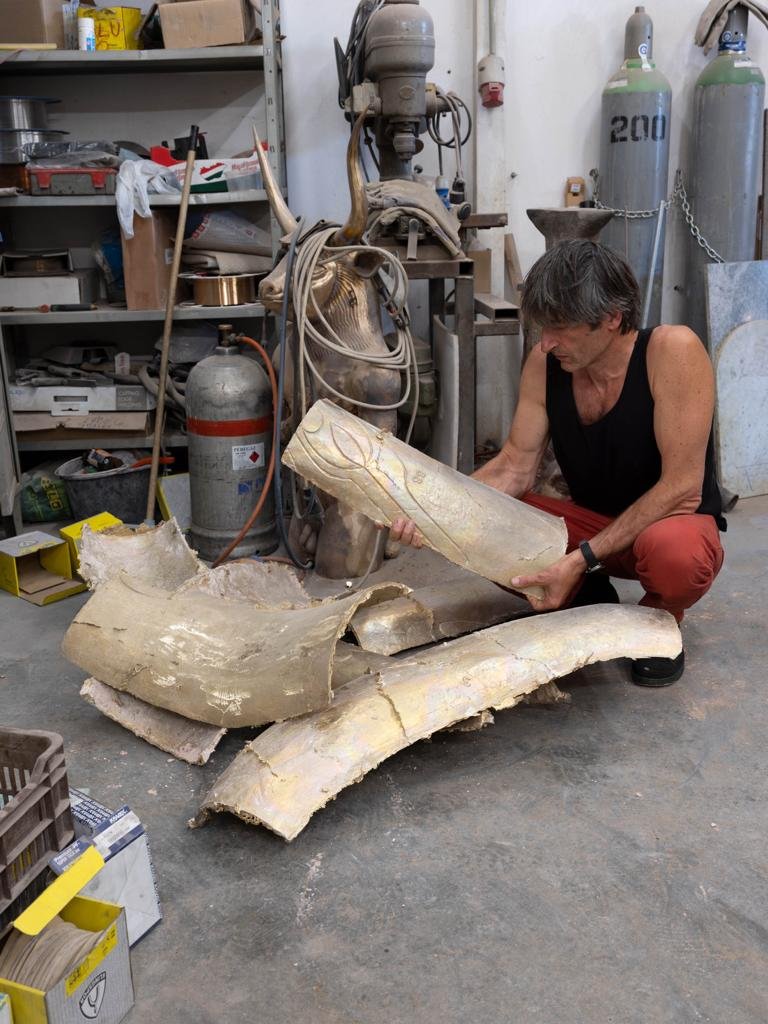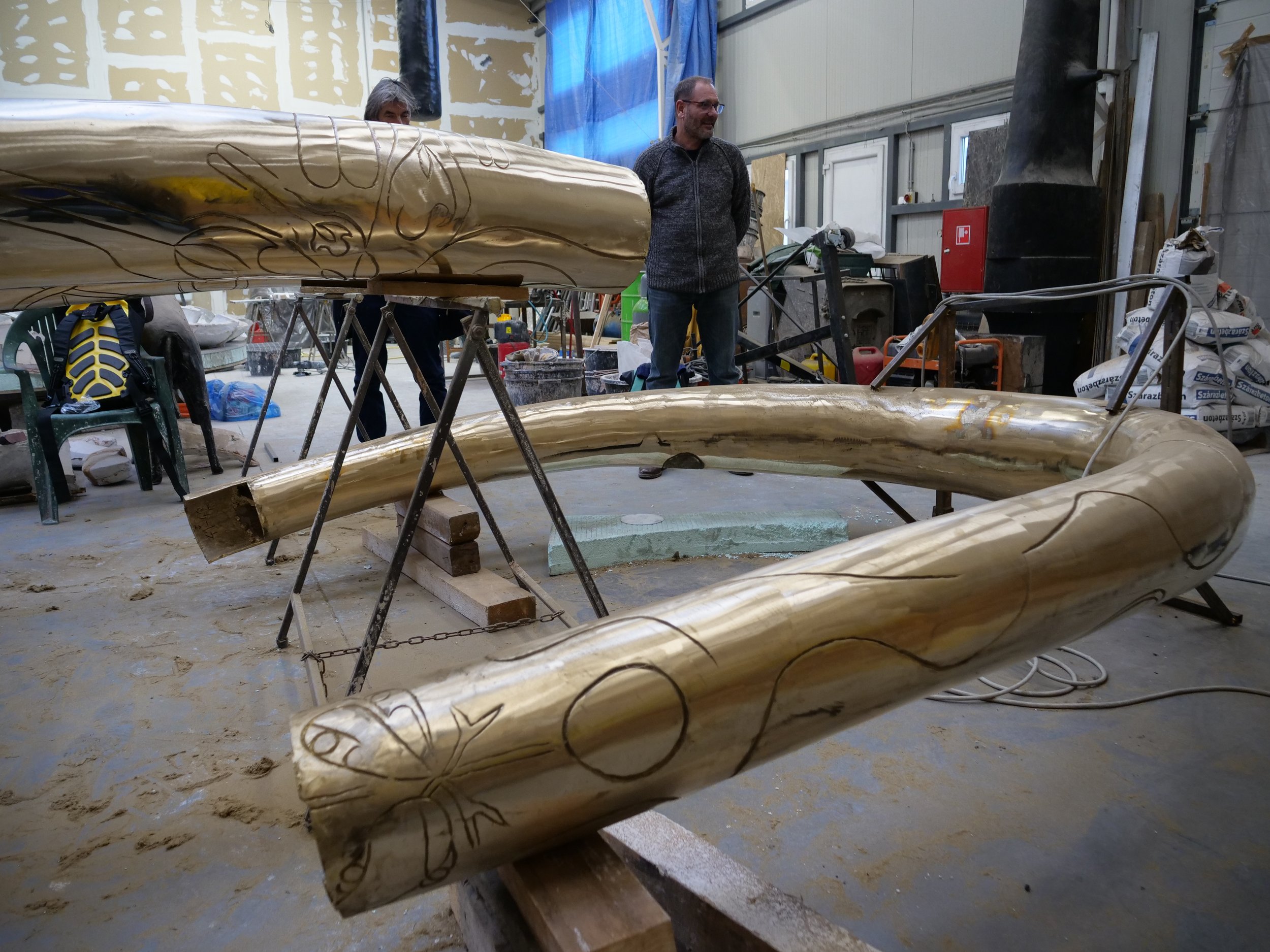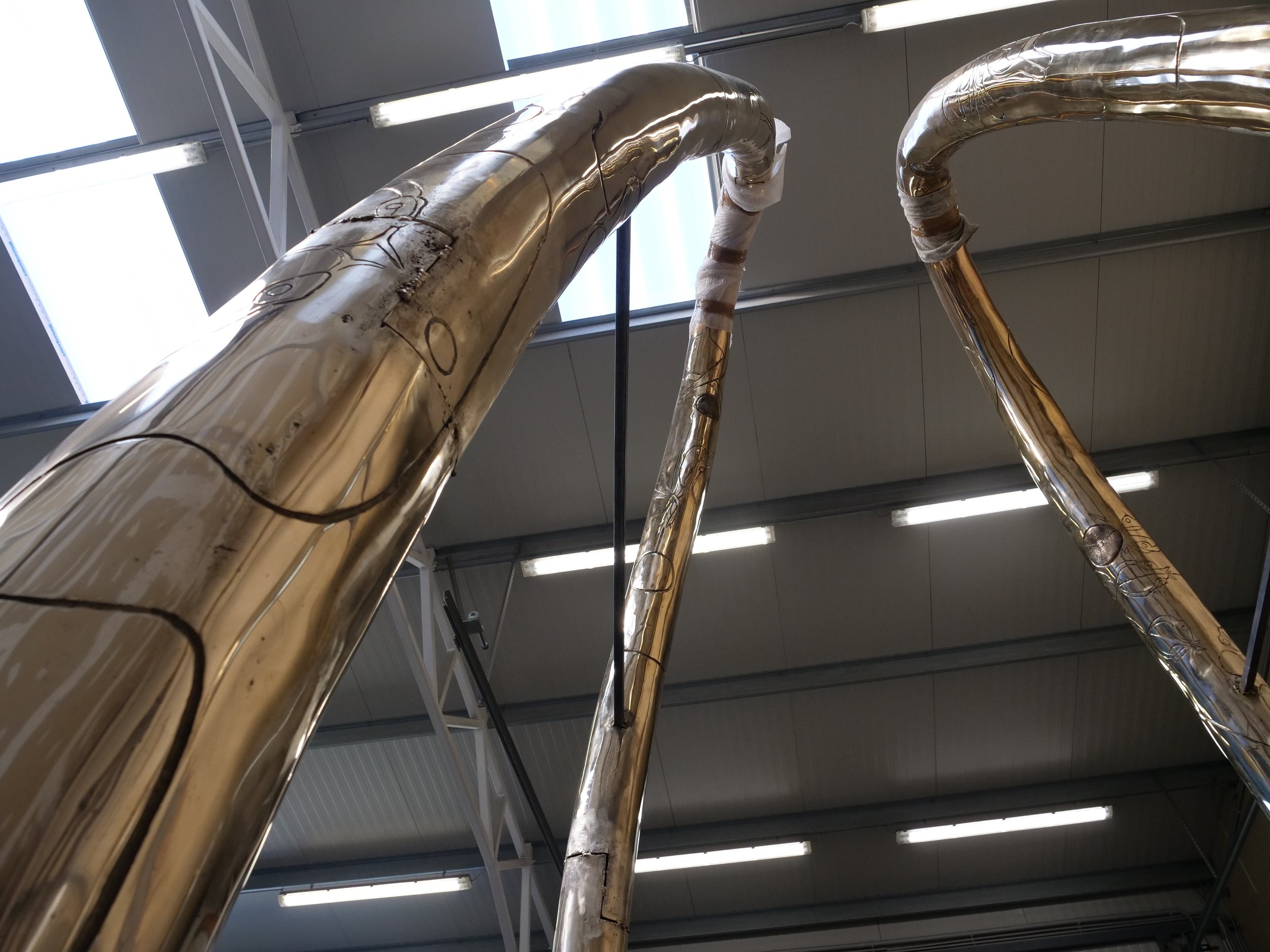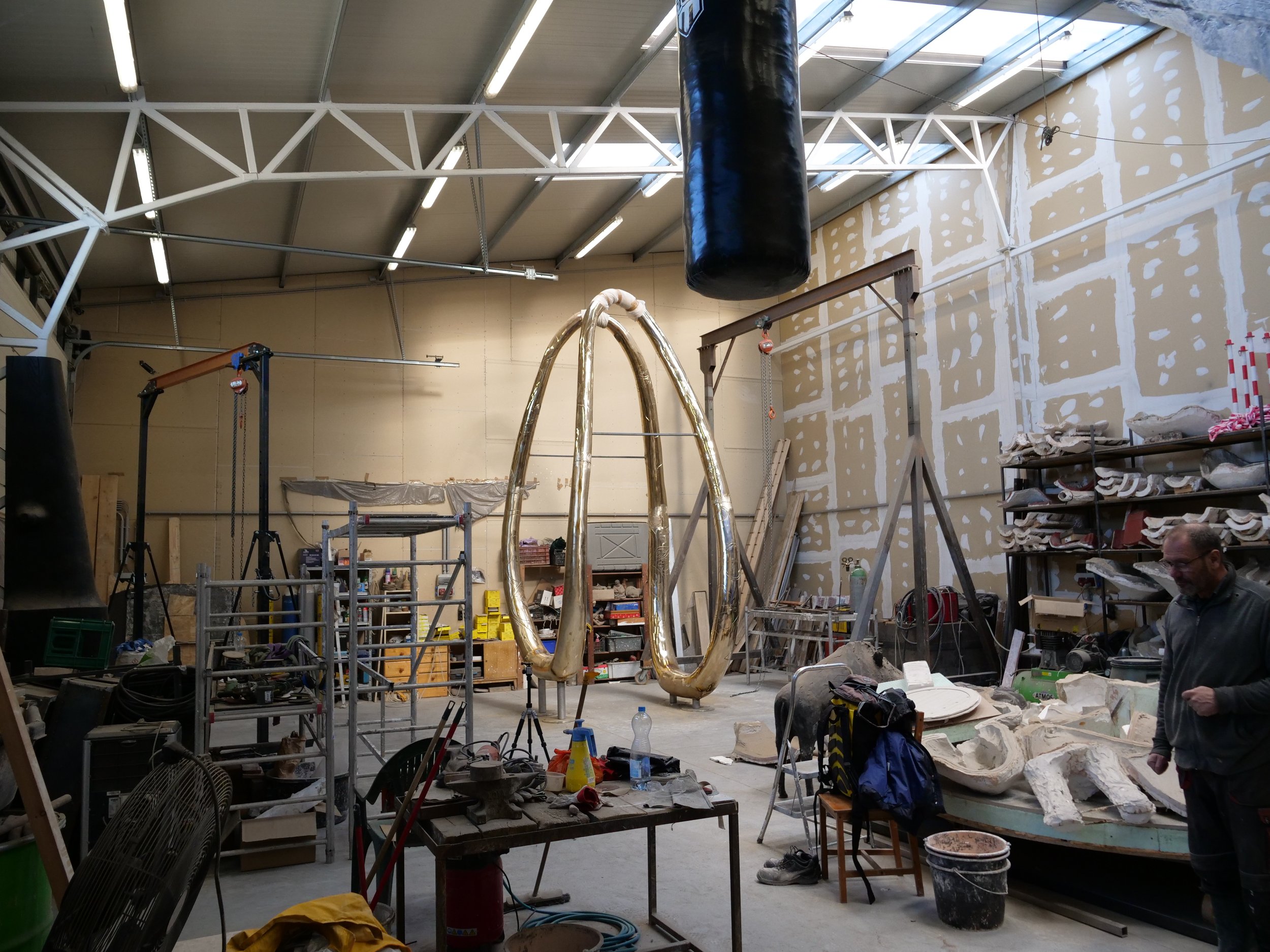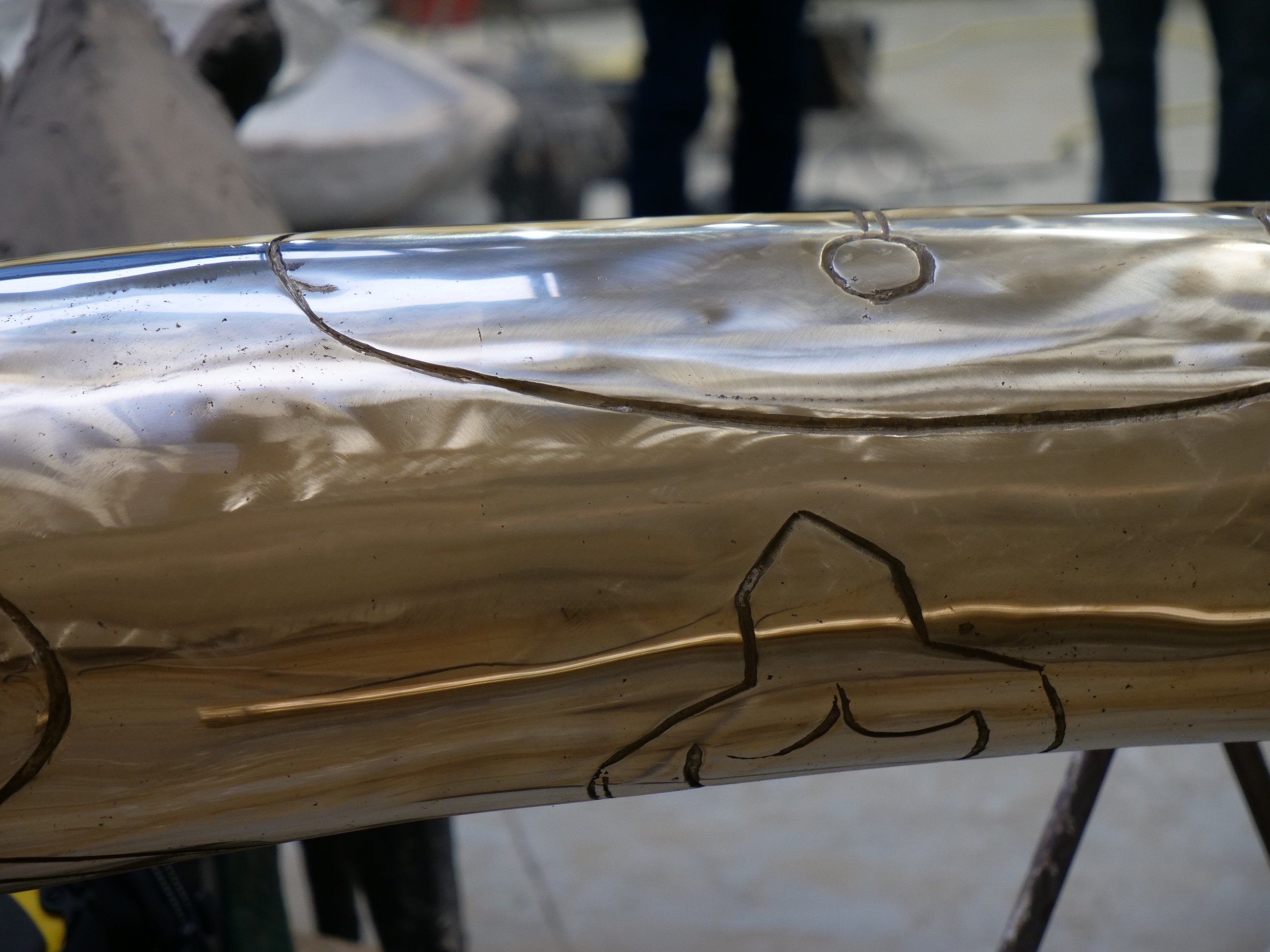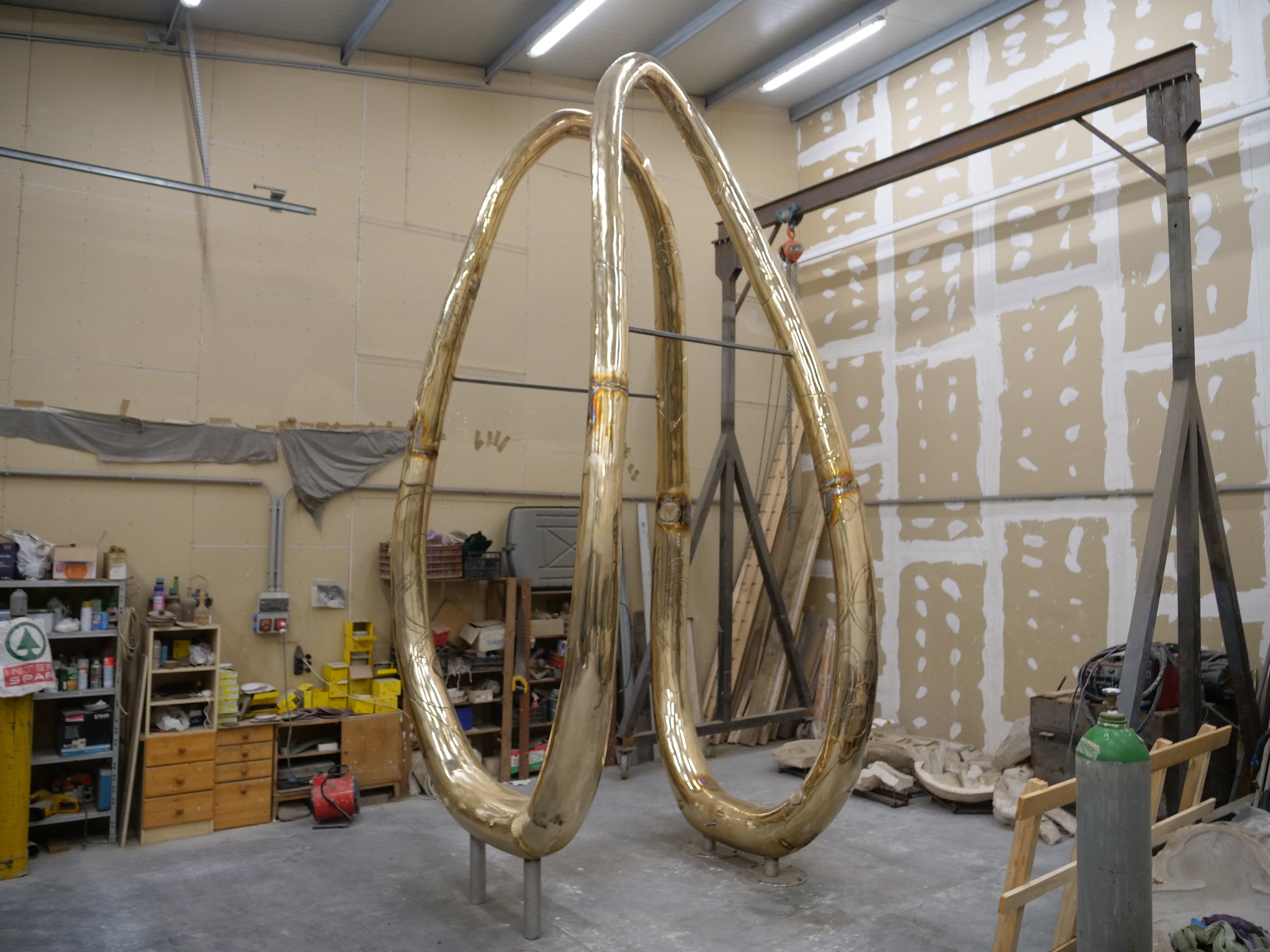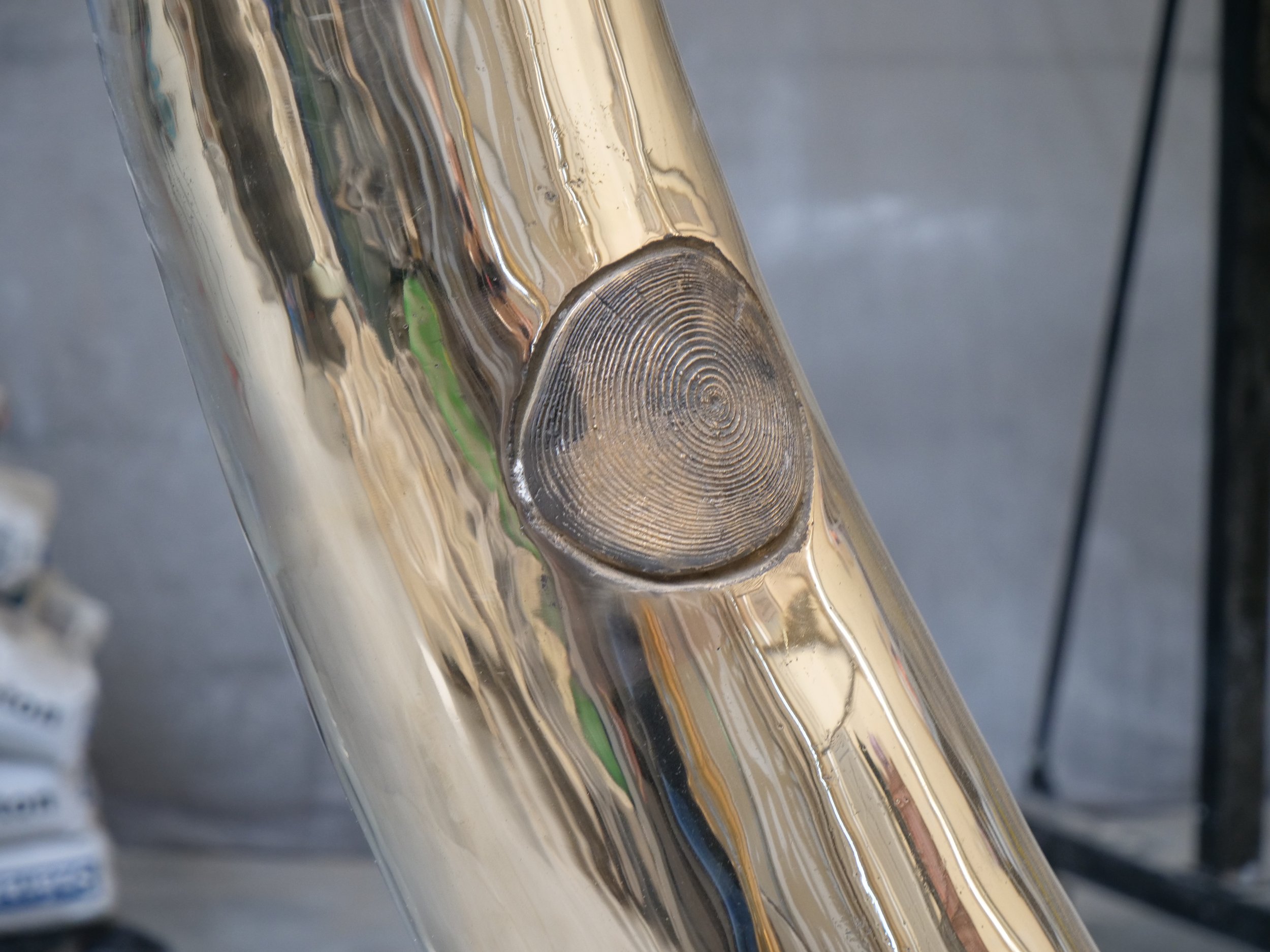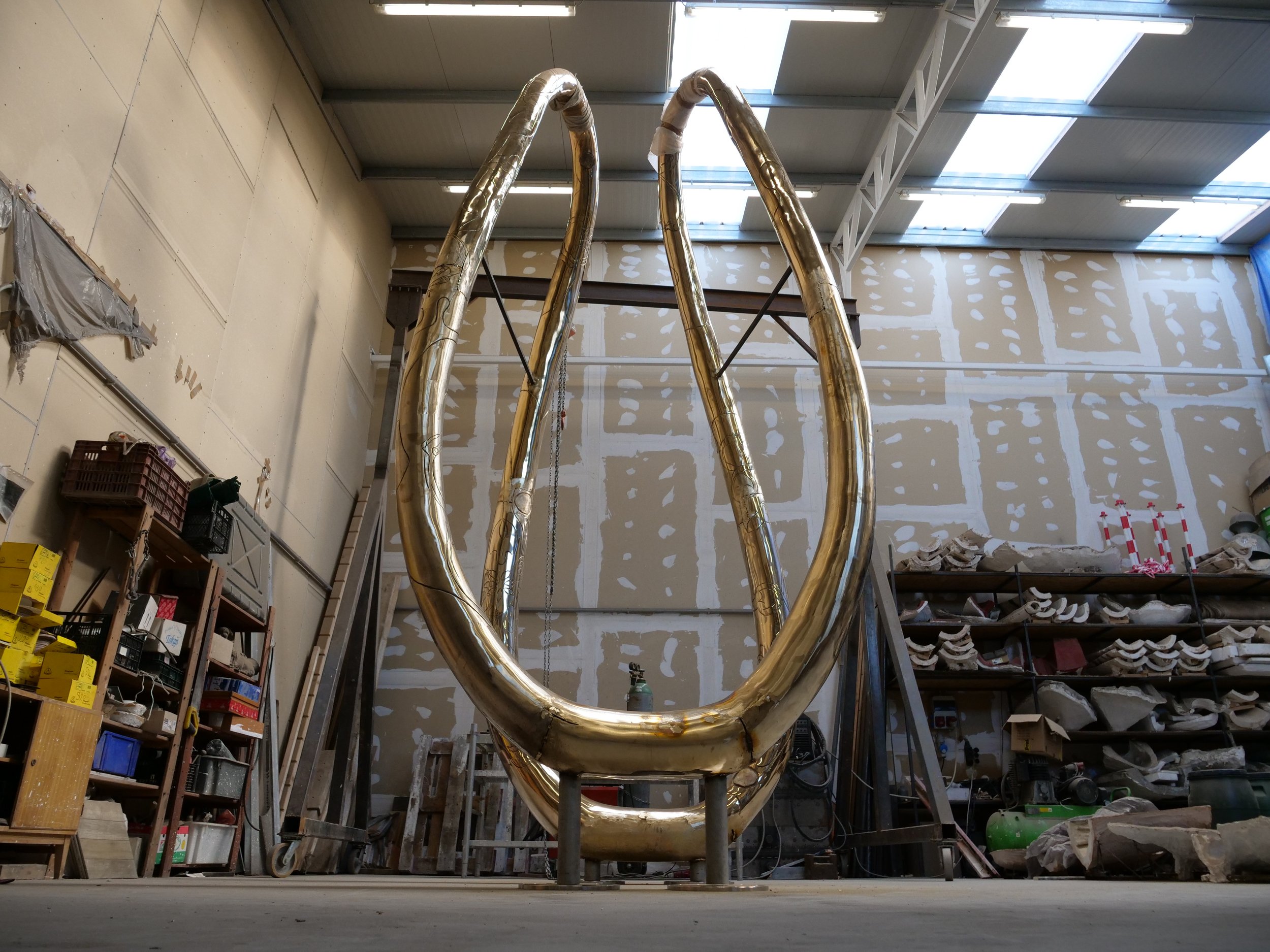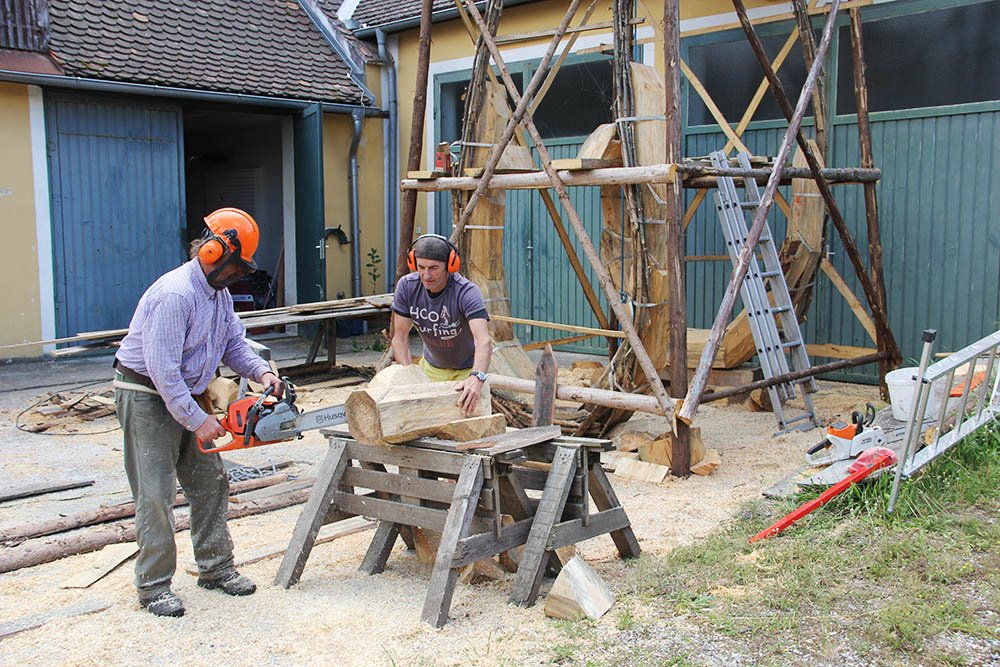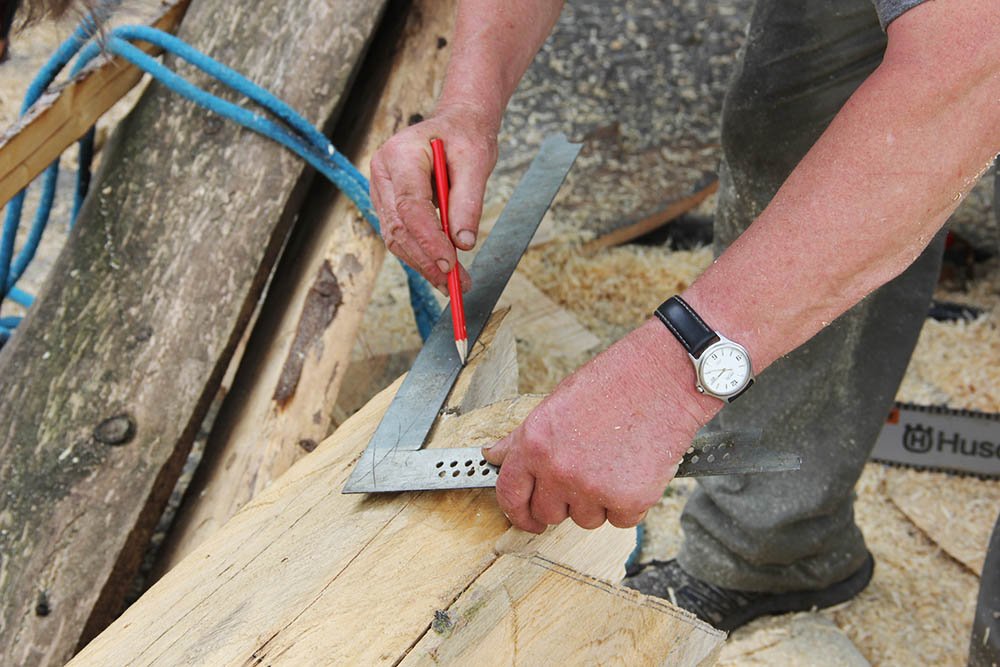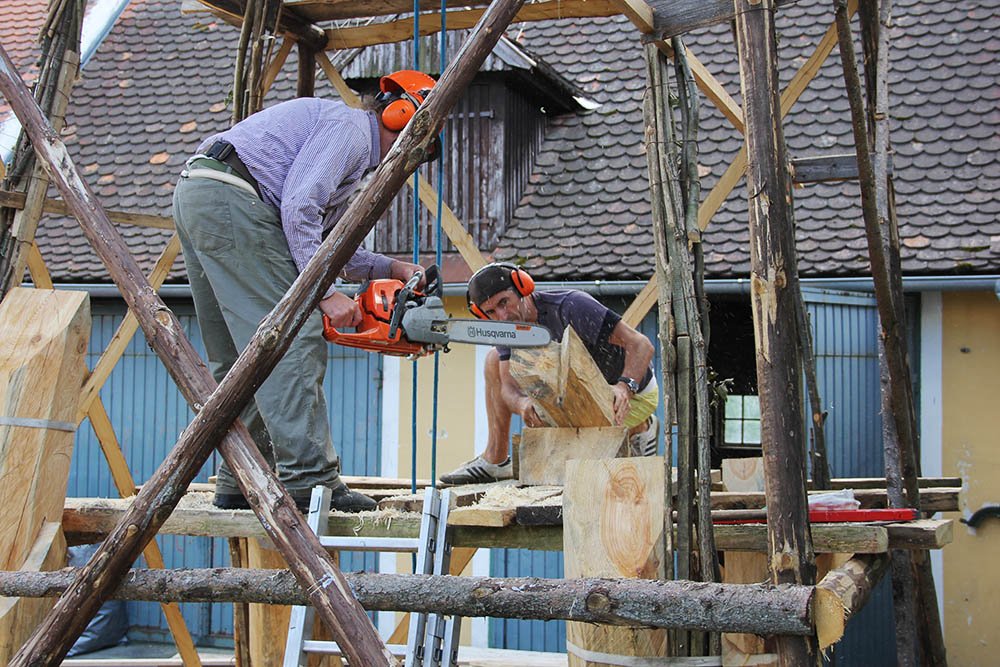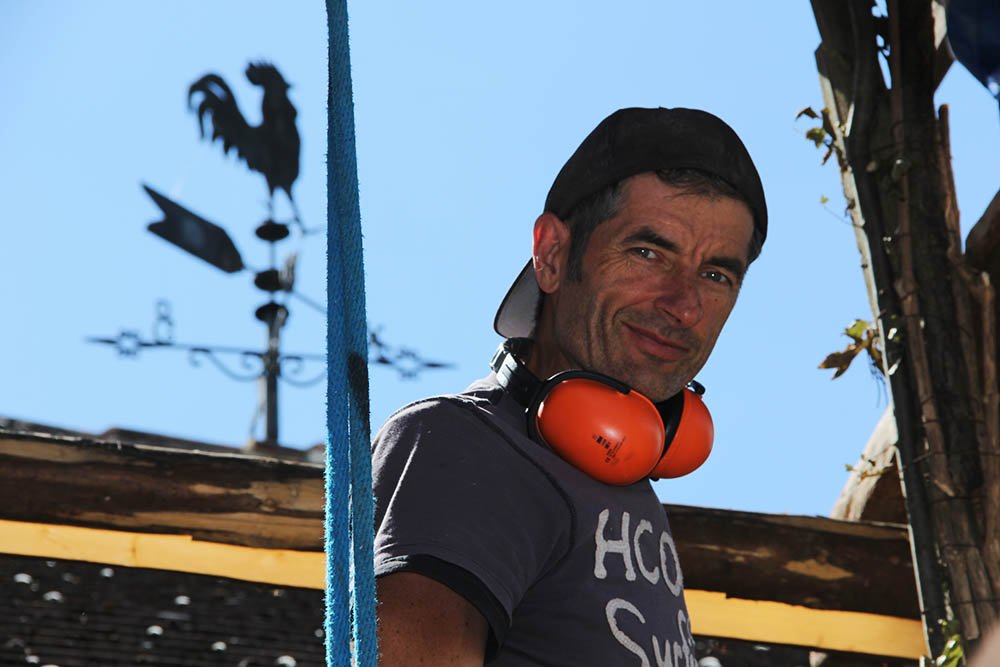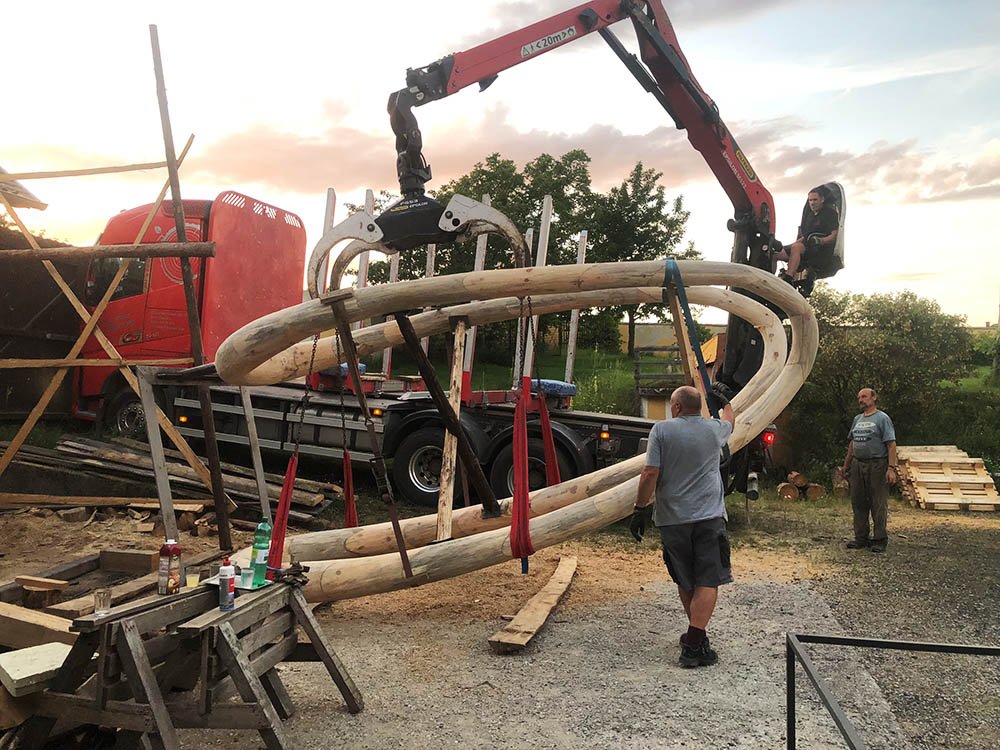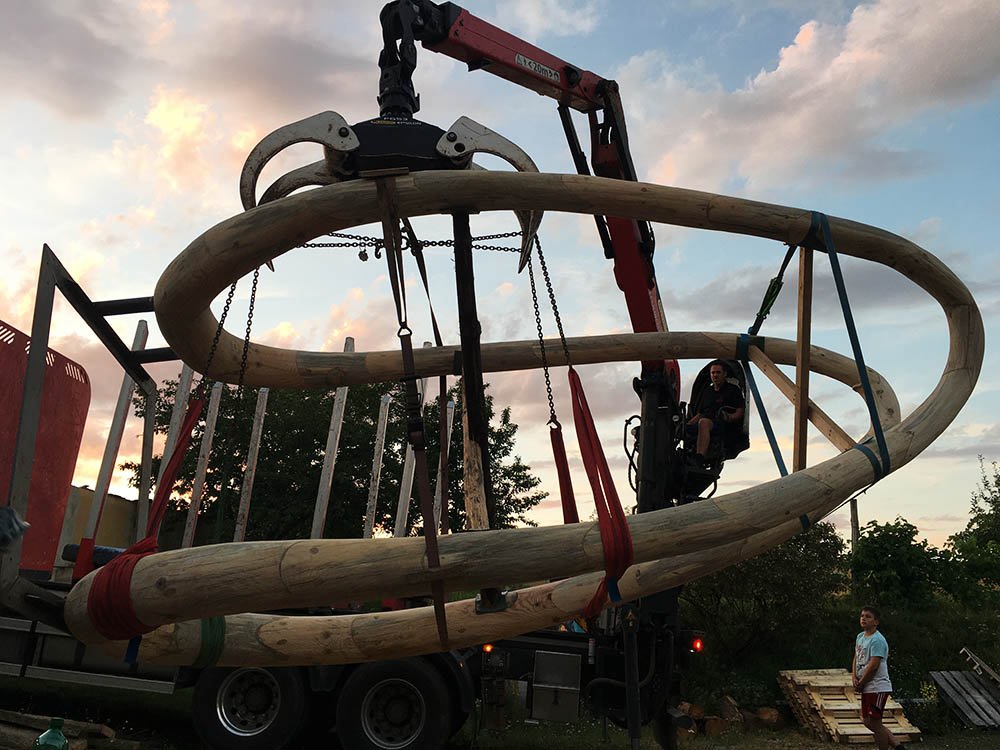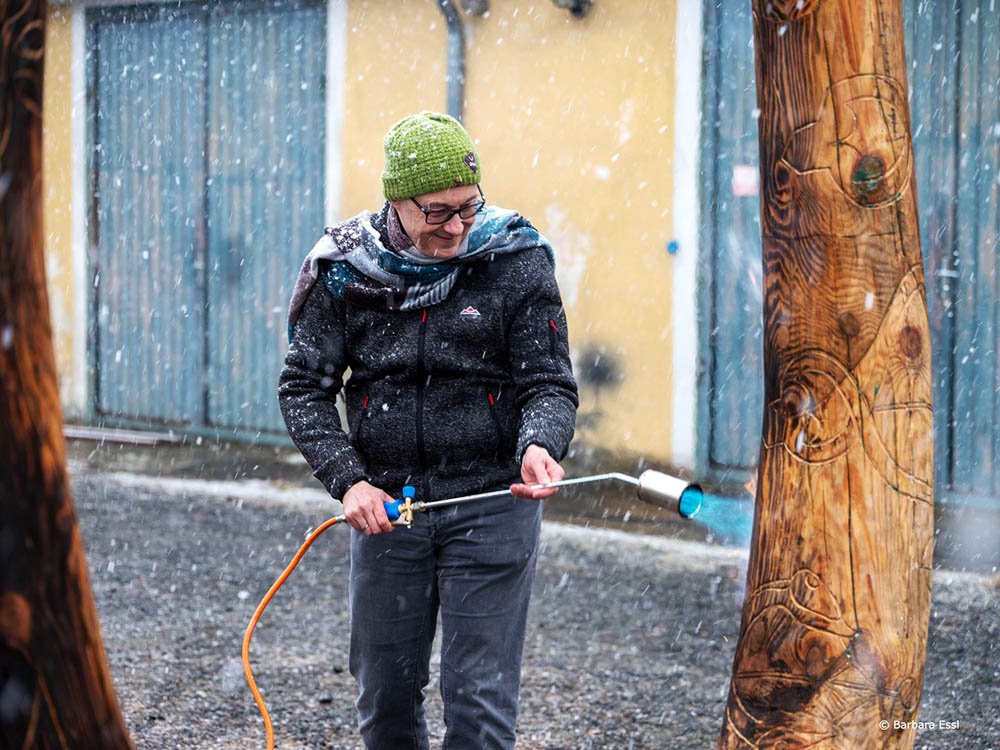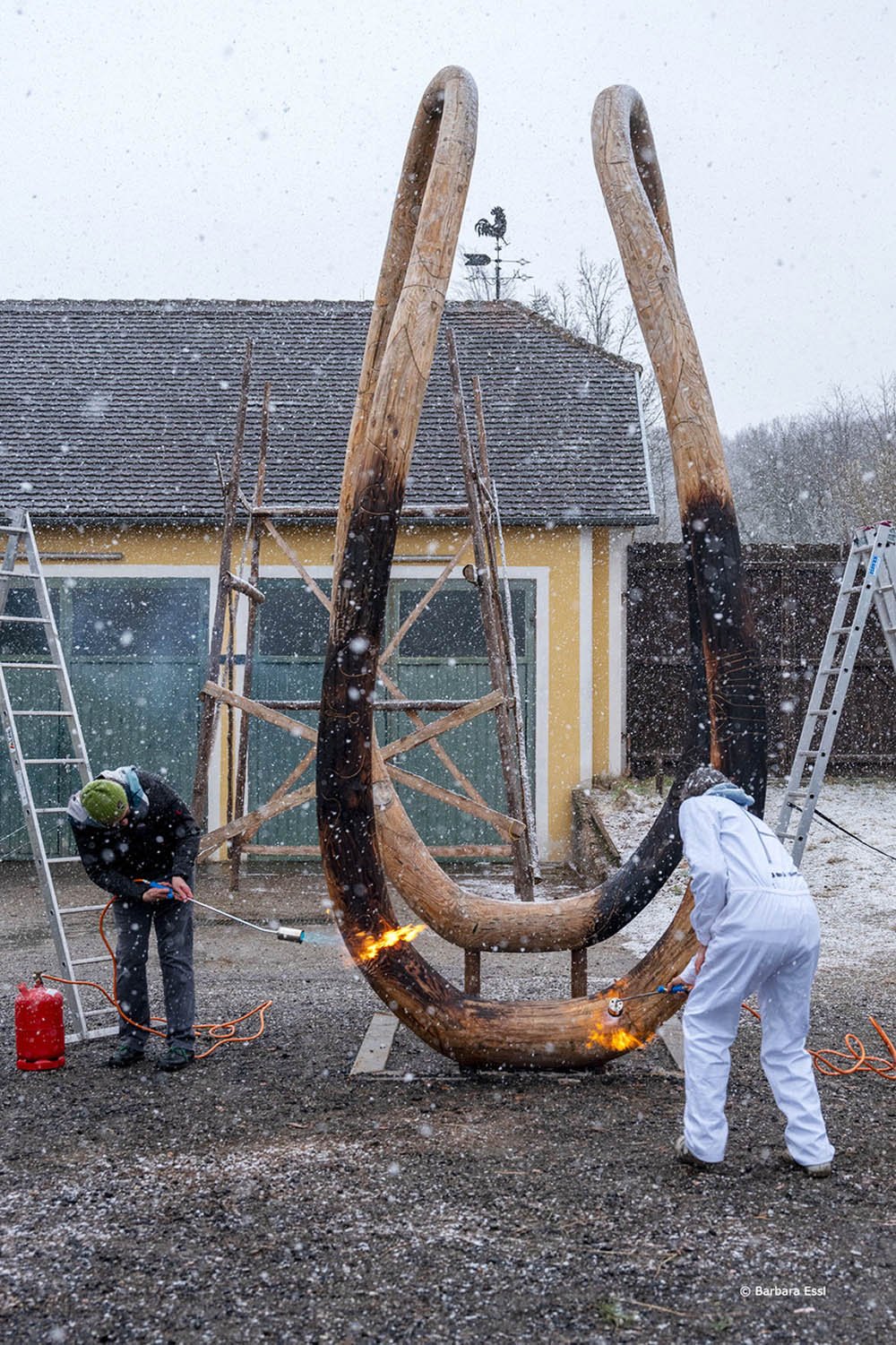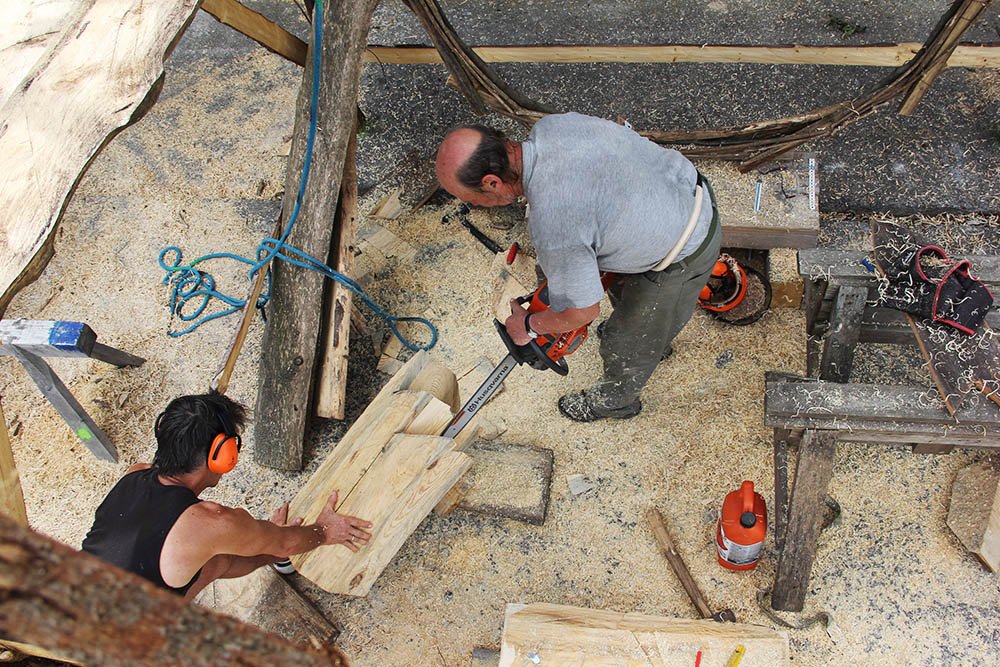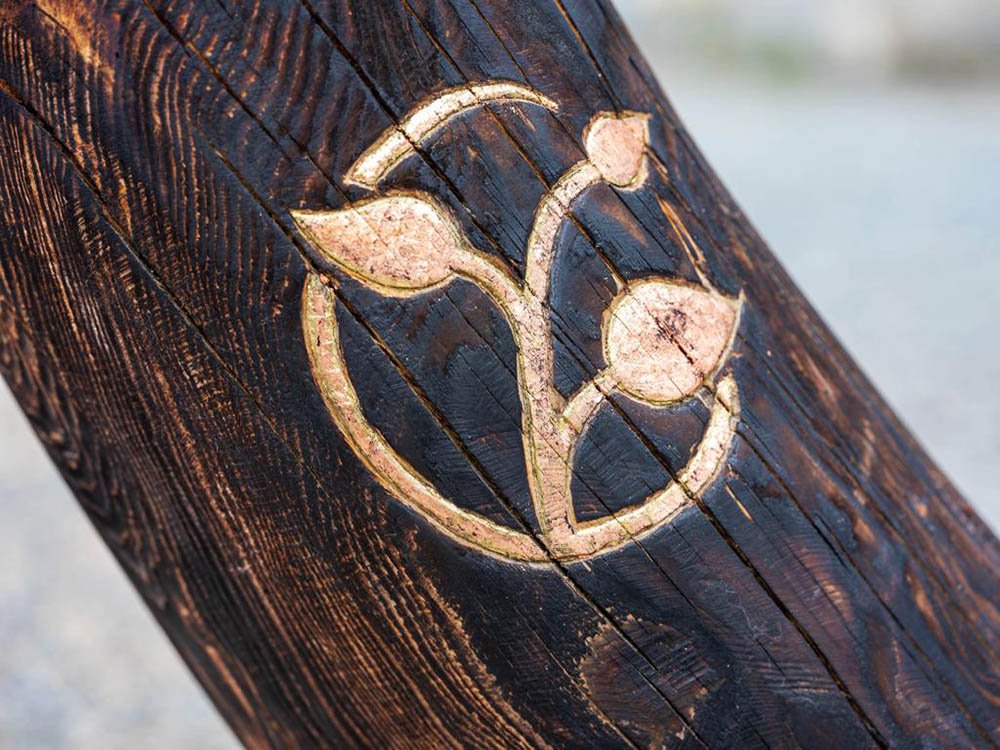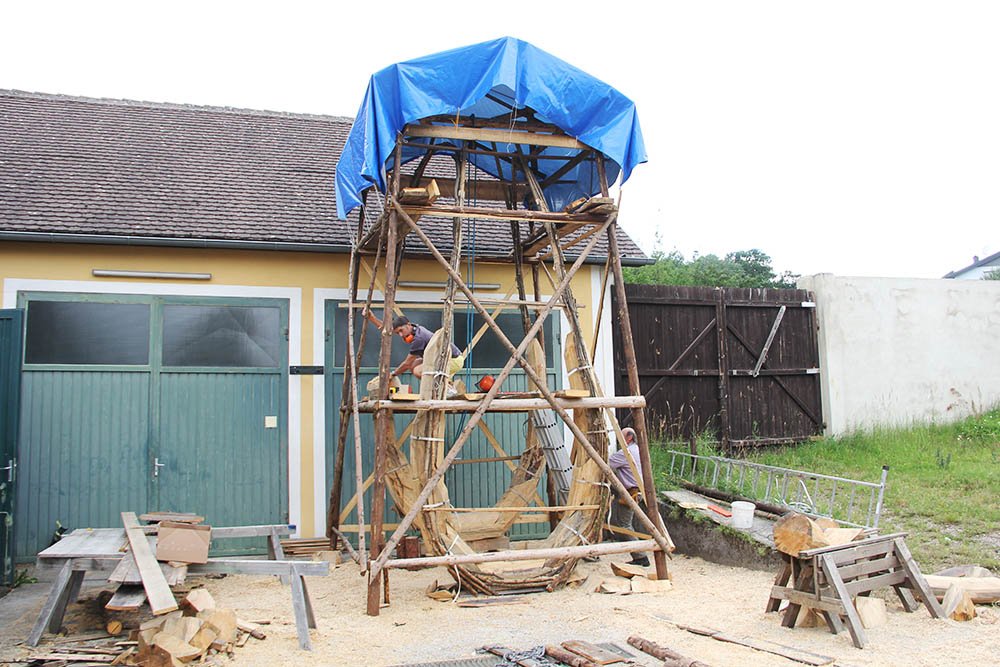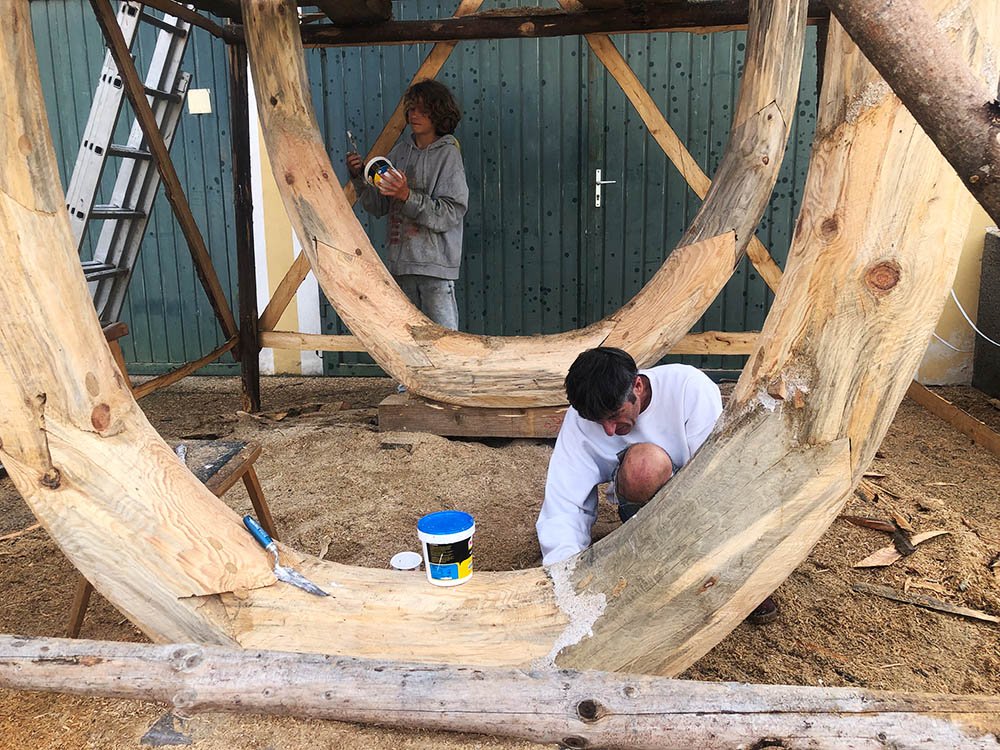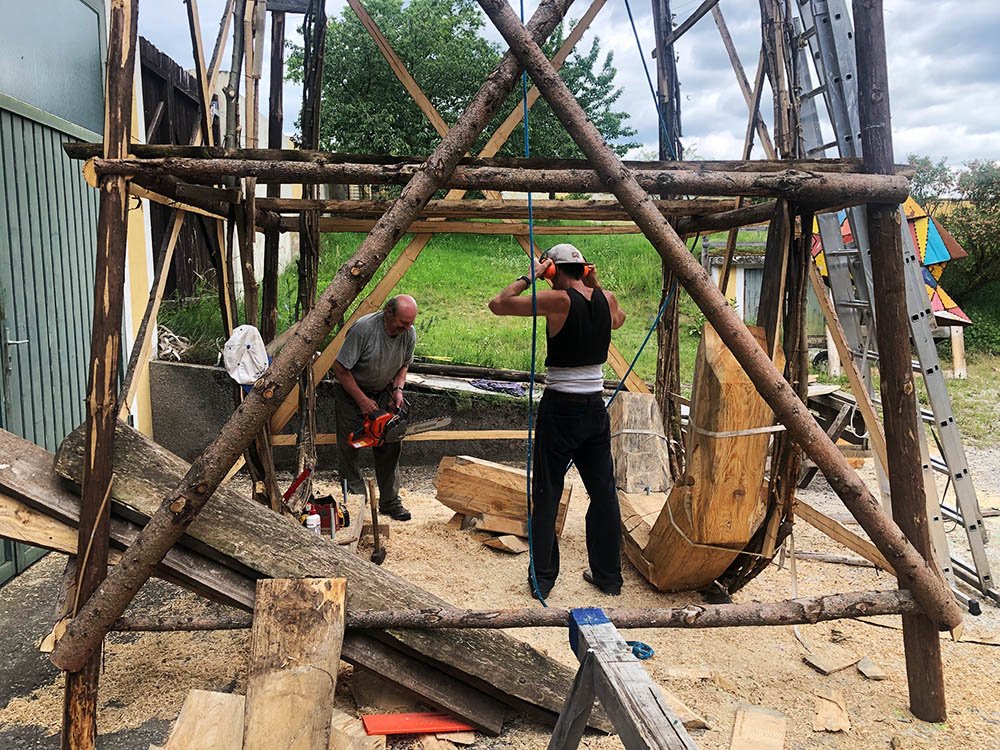A work of art That stands for peace and tolerance in our world.
Artists Emmerich Weissenberger and Nora Ruzsics were commissioned to create an artwork as a symbol for a new beginning during the global pandemic by the renowned Austrian art collector Martin Essl, whose family founded the Essl Museum in 1999. The Essl Collection has been held by the ALBERTINA Museum since 2017 and now forms the backbone of the museum’s modern and contemporary art holdings. The Essl Collection was exhibited for the first time at the ALBERTINA Modern in Vienna in 2021. The artists Weissenberger and Ruzsics first created a wooden lemniscate as a symbol of new beginnings, a renaissance that we are experiencing after two years in which COVID-19 has changed our lives entirely.
Based on a unanimous decision of the Austrian Parliament, the monument was placed on Vienna’s Heldenplatz between the two temporary pavilions of the Parliament, seat of the Austrian Federal Government, for more than a year. It is a symbolic place, directly in front of the Imperial Hofburg Palace, for centuries the seat of the Austrian emperors. Martin Essl donated the wooden lemniscate to the Medical University of Vienna in 2023; it now stands in front of the university hospital in Vienna, the city's General Hospital (AKH).
During its creation, the artists made the decision to create a second lemniscate of the same dimensions, this time made of bronze, to represent the hope for peace and freedom in our world. They called it THE MONUMENT OF HOPE.
The Monument of Hope will go on tour and inspire people all over the world. It is conceived as a symbol of peace and freedom and of a dialogue that transcends borders: how we can learn from the past to become ready for the future to create together a livable, peaceful world.


